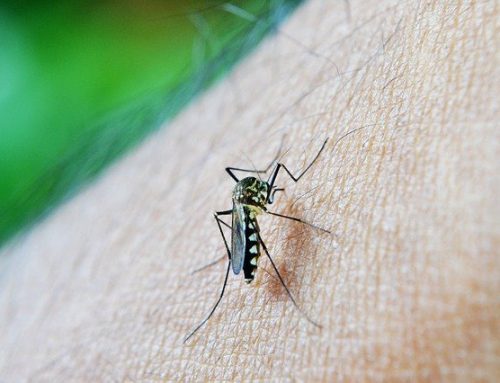Gassiness is common in infants
Gas is almost synonymous with a newborn baby. Almost all babies experience gassiness (in varying degree), especially in the first 12-16 weeks after birth. But gas can cause some babies to be fussy, cranky, burpy or bloated. Most of the time such discomfort is temporary and not a concern (especially if the baby is okay after passing gas or after a bowel movement). The digestive system of a newborn is not fully matured at birth. The immature digestive system in the most common reason of gas in a newborn. With baby’s growth, his digestive system develops, and baby becomes more active; which helps infant’s body to manage gas.
Have you noticed that babies, as young as a week old, can give varied expressions when passing gas: strained face, strained red face, poker face, slight smile, etc.. These expressions usually evoke a lovely laughter from parents and caregivers (unless the baby is in discomfort).
But if your baby is persistently irritated due to gassiness, or shows other symptoms like vomiting, diaper rash, diarrhoea, etc. please consult your paediatrician.
Techniques for gas relief
While gassiness is common in babies, and not necessarily a problem, it can cause some degree of discomfort to your baby. Caregivers can help baby relieve gas. Following are few of the commonly practiced techniques to help baby ease gas trouble. These methods are useful till a baby is 3-4 months old, or till baby starts rolling over (and becomes more active):
- Tummy time
- Exercises for gas relief
- Applying hing (asafoetida) paste around navel
Tummy Time:
Tummy time merely is baby’s time on his tummy; when the baby is placed on his abdomen on a flat, firm surface. It may sound scary, but it is instrumental to provide relief from gas. Tummy time is highly encouraged by paediatricians and nurses. You can give tummy time till the baby is 3-4 months old, or starts rolling over by self. Learn to keep your baby on tummy under the guidance of an experienced caregiver or a medical professional. Consult your medical practitioner about the details. Ensure someone is present to supervise your baby during tummy time. Keep baby’s nose and mouth from being blocked when lying on his stomach. If your baby is uncomfortable during tummy time, try it again after few days/weeks. If your baby is reluctant to rest on his tummy, try to encourage or entertain your baby when he is lying on the abdomen (speak with the baby, show bright coloured objects, etc.).
I kept Anu on her tummy since she was two days old. I was very scared the first time, but nurses at hospital taught me how to lay her resting on her belly. I practised under their guidance, which gave me the confidence to give her tummy time daily. Anu had her tummy time 3-5 times a day, starting with 2-3 minutes each time and I gradually increased it to 6-10 minutes each time. I preferred to give Anu tummy time either an hour after her feed or 45 minutes before her feed time. A loud fart was many times heard during or just after her tummy time :-). We stopped tummy time when Anu was around 4 months old.
Exercises for gas relief:
- Cycling exercise: Moving baby’s legs, to imitate cycling, while the baby is lying on his back. A highly recommended way to help release trapped gas (baby’s thighs press against lower abdomen when leg goes up which helps to release gas). Pressure should be gentle.
- I did cycling exercise for Anu (around 1-1.5 hours after her feed) 2-3 times a day, set of 20 repetitions. I started this bicycling exercise when Anu was a week old and continued doing it daily till she was 4 months old.
- Pushing knees to chest: Gently fold baby’s legs at the knees and then push the knees up to the chest (such that baby’s thighs push against the abdomen).
- Started doing this exercise when Anu was a week old, repeated daily (immediately after cycling) till Anu was 4 months old, 3-5 times a day, set of 15-20 repetitions.
- Belly rub/massage: Gently press baby’s abdomen with your hand. Or gently massage your baby’s belly my moving your hand/palm in a circular motion (many people suggest rubbing in a clockwise direction. Please consult your paediatrician for the exact details).
- I never did belly rub/massage for Anu. But a lot of fellow moms swear by it for relieving baby of gas, especially a belly massage followed by a warm bath. Anu’s ‘maalishwali’ aunty would give her gentle belly massage before bath.
Note: Learn/Practise these exercises under the guidance of an experienced caregiver or a medical professional. Please be careful that baby is not in discomfort due to excess pressure or incorrect technique.
Applying Hing paste around navel area:
Hing has this *magical* gas-relieving ability. It is a traditional Indian and very popular “nuksa” to provide relief from gas. Instant relief within few minutes! Just mix hing in a spoon or two of water to make a slightly thick paste and apply in a circular motion around the navel. Be prepared to hear the trapped gas getting released 🙂 and cranky, gassy baby giving that expression of relief :-).
Anu had two gas episodes which made her fussy. Both times applying hing paste around navel worked instantly.
Note: While applying hing is effective, it is recommended to be used sparingly, when other gas-relieving home remedies do not work. Also, do a patch test before applying hing paste around the navel.
Simple techniques for gas relief worked well for us
For Anu, I think, regularly performing the gas relief exercises and tummy time kept the gas trouble at bay. As mentioned earlier, Anu did have two severe episodes of gas trouble before starting solids (one around 4 weeks and another one surprisingly around 5 months) which made her very cranky. Fortunately applying hing paste around navel provided her with instant relief on both the occasions.
We stopped giving her tummy time, or doing the exercises for gas relief once she started rolling over on her own (around 4 months). After she started rolling over by self, she spent enough time on her tummy anyways :-)!
Should I give oral medication for gas relief
Many elders or experienced caregivers may recommend gripe water for gassiness (or crying without apparent reason) (remember the Woodward’s gripe water ad. in which more than three generations of elders advice on giving gripe water to a crying baby). Gripe water is a very popular *social* recommendation for gassiness. However, from the experience of many fellow moms, paediatricians seem to have a divided opinion about prescribing gripe water. While some doctors prescribe it, others discourage use of gripe water till baby starts solids.
Gas trouble can be mistaken for colic or vice versa. Parents may end up giving colic relief medicine, especially if their baby is fussy or cranky for long hours, or various attempts to pacify the baby has failed. It is best to discuss the symptoms of colic vs. gassiness with your paediatrician before administering prescribed colic relief medicine.
If your baby is persistently fussy due to gas (and simple techniques to relieve gas aren’t working), please consult your paediatrician for a diagnosis.
Always consult your doctor before giving any oral pain relief medication to your baby.





Greetings! I’ve been reading your website for some time now and finally got the courage to go ahead and give you a shout out from Austin Texas! Just wanted to mention keep up the fantastic work!